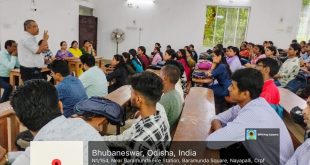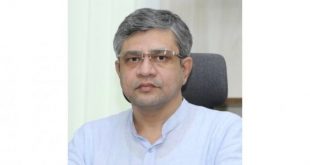Taking a tough stand and sticking to one of his pre-election promises, Bihar Chief Minister Nitish Kumar announced to ban alcohol in Bihar from April 1, 2016. Despite knowing the fact that the government would lose Rs 4,000 crore excise revenue annually, Nitish Kumar has taken the bold decision for the interest of the public, particularly for women voters.
Now the question arises if Bihar can ban alcohol then why not Odisha?
Taking such a step would not be a cup of tea for a government like Biju Janta Dal (BJD) who is in power since 2000.
In the past, father of Chief Minister Naveen Patnaik, the then CM of Odisha Biju Patnaik had put a complete ban on the country liquor trade in tribal districts in the early 1990s. “It was banned only in tribal dominated districts”, the state government ignored revenue of Rs 27 crore collected towards country liquor in the 90s from tribal districts.
Having assumed office since March 2000, Chief Minister Naveen Patnaik has rolled series of schemes from birth to death but has never thought to ban liquor in the state. It is often assumed that if Biju Patnaik can ban alcohol, why not four-time CM and his son Naveen Patnaik?
Will Naveen Patnaik, who is always gloating over fulfilling the dreams of his father, follow the path of his Bihar counterpart?
The government in April 2014 during assembly session had admitted that it cannot ban liquor in the state but pledged to curb liquor trade in the state.
At present, out-still liquor shops exist in 21 of the 30 districts in Odisha. The state include Sambalpur, Rayagada, Bargarh, Nabarangapur, Jharsuguda, Malkanagiri, Deogarh, Sundargarh, Kalahandi, Angul, Nuapada, Keonjhar, Bolangir, Mayurbhanj, Sonepur, Ganjam, Boudh, Gajapati, Koraput, Dhenkanal and Berhampur. Most being tribal dominated districts. Apart from that, country spirit shops are prevalent in Cuttack, Nayagarh, Jagatsingpur, Khurda, Kendrapara, Bhadrak, Jajpur, Balasore and Puri.
Since assuming power, BJD has managed registered a 15-fold increase in the excise revenue during the past 15 years and has also increased the number of liquor shops in the period.
According to a statement given by Excise Minster Dr Damodar Rout, the excise revenue was only Rs135 crore in 2000-01, and it has increased to Rs2,038.79 crore in 2014-15. The State has gained Rs788.99 crore as excise revenue in the first four months of this fiscal 2015-16.
The State had 613 liquor-off shops, 140 liquor-on shops and 13 beer parlours in 2000-01. The number reached 1,158, 436 and 127, respectively, in 2014.
According to reports, the State government has collected Rs.2,709.73 crore as excise revenue including Rs.6,70.94 crore of sales tax and entry tax in the period 2014-15, while it had collected a total of Rs.2,286.04 crore in the period 2013-14.
The government has collected Rs.2,038.79 crore excise revenue without sales tax and entry tax by March 2015, which is 14.46 percent higher compared to last financial year.
Notably, to increase the excise revenue, the government had implemented a hike in sales taxes on foreign-made liquor last year aiming to garner more revenue. In June 2014, the government in the Budget for the period 2014-15 had proposed to hike sales tax on foreign-made liquor to 25 percent, from 20 percent charged earlier.
In 2014, the state government was under fire for permitting liquor shops to do business until midnight. The government had permitted hotels, restaurants and bars in Bhubaneswar, Cuttack, Berhampur, Rourkela and Sambalpur to sell liquor till midnight to generate revenue of around Rs 2,150 crore in the 2014-15 financial year. However with growing criticism, the government had to revise its order.
If the government feels that it can earn huge revenue through licensing and taxing liquor sale in the state, then the decision and policy makers have to think again.
However, it would be shameful to say that Odisha government’s major revenue earning source is Alcohol or excise.
According to reports, the revenue collection of the State during 2014-15 has grown by 10.09 per cent over the previous financial year. The total revenue collection during 2014-15 has been around Rs 27,820 crore as against Rs 25,093 crore in 2013-14. This includes both State’s own tax and non-tax revenue. The total collection of tax and non-tax revenue was budgeted at Rs 27,886.65 crore in 2014-15.
The total collection of State’s tax revenue has been around Rs 19,996 crore against the budget estimate of Rs 19,862 crore. Similarly, revenue collections from non-tax sources like industrial water cess, forest and wildlife, irrigation water, departmental receipts, interests and dividends have also exceeded the budgeted target.
The mining sector is stated to be the largest contributor to the state revenue. Despite the closure of mines and low production of minerals, the state government earned a royalty to the tune of Rs5,308 crore.
On the other hand, the government has failed to realise Rs 51,941.13 crore tax revenue from various business firms, as around 7,180 cases were pending in different courts like Orissa High Court and the Supreme Court.
The collection of commercial tax, water tax, electricity bill, mining revenue and other taxes amounting to Rs 51,941.13 crore is stalled due to court cases. While the highest amount of Rs 46,191.69 crore could not be collected from the mining sector, Rs 3563.28 crore also remained non-realised as commercial tax, this was admitted by state Finance Minister Pradeep Amat in Odisha Legislative Assembly.
The state government need not worry about the much revenue loss, rather than the consequences of banning liquor in the state.
 Update Odisha-Latest Odisha News I Breaking News Get latest news on Odisha, Govt. Jobs, OSSC, OPSC, Entertainment, Crime, Sports, and Education
Update Odisha-Latest Odisha News I Breaking News Get latest news on Odisha, Govt. Jobs, OSSC, OPSC, Entertainment, Crime, Sports, and Education




